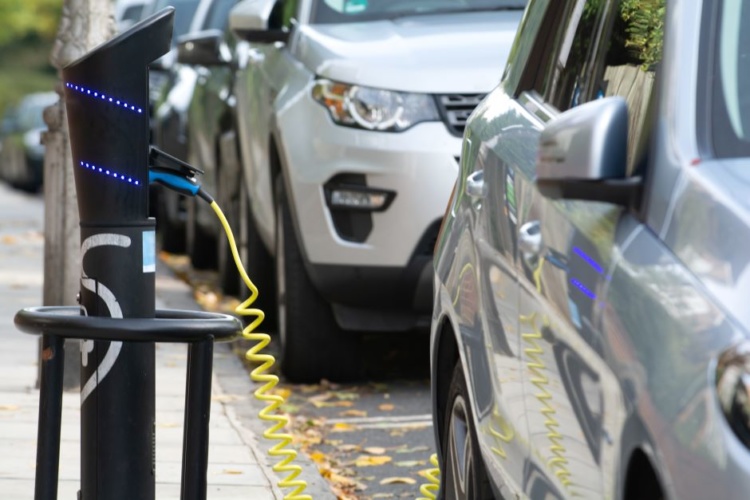
The UK’s two-year old children will be eligible to drive in 2035, and their motoring experience will be defined by technological, legislative and behavioral changes that are taking place today.
By the time they learn how to drive, battery (BEV) and other alternatively fueled electric vehicles will dominate the nation’s roads and for a certain urban demographic, the notion of vehicle ownership will probably lose ground to those seeking mobility as a service (MaaS) solutions.
New battery could deliver 1000km to electric vehicles on single charge
Petrol and diesel vehicles will not disappear overnight but from 2035 manufacturers will not be able to sell new petrol and diesel cars, vans, or so-called hybrid vehicles.
The government’s decision to phase out these vehicles was announced in 2018 with a deadline of 2040 that was brought forward at the launch COP26 on February 4, 2020. Transport secretary Grant Shapps later hinted that the timeline could shift again to 2032.
Mike Hawes, chief executive of automotive trade body SMMT (Society of Motor Manufacturers & Traders) responded by saying that 2035 was a ‘date without a plan’, citing vehicle expense, relatively low sales, ‘a woefully inadequate’ charging network, and lack of clarity on the plug-in car grant as factors that will stymie the uptake of BEVs and other relevant alternatively fueled vehicles (AFVs).
According to SMMT’s monthly round-up of new car registrations, 148,997 new cars were registered in December 2019, with BEVs making up 4,939 of the total compared to diesel (33,884) and petrol vehicles (94,251). Compared to same period in 2018, however, BEVs saw their share of registrations rise by 220.7 per cent, and other forms of AFV experienced a rise in registrations over the same period.
For Nigel Morris, electric vehicle integration manager at the Active Building Centre, government should look at Norway to address affordability.
“Price parity has been engineered through EVs being exempt from non-recurring vehicle fees, such as purchase taxes and 25 per cent VAT,” he said. “This has resulted in a dramatic proportional increase of EV sales with over 75 per cent of new car sales in 2020 being electric.”
According to Morris, the 12-to-15-year timeline will also be a factor in driving down the cost of new vehicles.
“With every new EV model launched, we’ll see advances in terms of style, desirability, range and technology,” he said. “As a result, earlier models will become increasingly affordable. Simultaneously, as new sales go up, so will used sales. As growing demand pushes up production volumes, economies of scale will see a corresponding drop in price.”
For Will Craig, founder and MD of LeaseFetcher, a car leasing comparison website, AFVs are already becoming increasingly affordable with long-term running costs massively counteracting the purchase price.
“I do believe that it is a case of supply and demand - manufacturers will feel the pressure to create cheaper EVs to meet a new, ready-made source of budget-conscious customers,” he said “The need to abide by the law will push up sales. And this roaring demand will then see a drop in prices in the long-term as EVs become the norm.”
Eben Lovatt, CEO of car leasing comparison website Moneyshake, believes charging point infrastructure will play its part in the affordability of AFVs, a factor addressed by the government in its Road to Zero Strategy.
The strategy’s numerous pledges include a £400m Charging Infrastructure Investment Fund and a commitment to charging points for new houses, motorway services, workplaces and even in lampposts.
The upcoming switch from diesel and petrol to AFV models is in part motivated by a pressing need to reduce greenhouse gas emissions and emissions of particulates that are injurious to health. The switch also provides the UK with an opportunity to get ahead in a global market estimated to be worth over £1.5 trillion a year.
“Just like progressive countries such as Norway, Denmark and Iceland, forward-looking manufacturers are seeing this change as an opportunity and new economy,” said Morris. “Think of smart phones, the internet, fast food delivery, Uber, Amazon – all new, all disruptive and all now accepted and pervasive. The established fossil fuel and automotive manufacturing industry have had a good run but will need to adapt to survive. They have done so before with safety and combustion emission limits and will do so again.”




Red Bull makes hydrogen fuel cell play with AVL
Many a true word spoken in jest. "<i><b>Surely EVs are the best solution for motor sports</b></i>?" Naturally, two electric motors demonstrably...